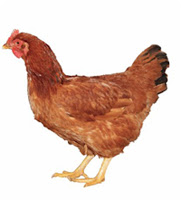How To Recognize Healthy And Sick Birds
An important skill for all poultry farmers to have is the ability to differentiate between healthy and sick birds. It is normal when a flock is diseased to find healthy birds and those with varying degrees of illness. It is then necessary to be able to tell as early as possible when some of the birds in the pen are sick.
While the manager may be able to identify some diseases from available evidence, it is unlikely that they will be able to identify all. However, the sooner a disease is noticed in the flock, the sooner appropriate action can be taken. This may include initiation of a medication program, send specimens to the laboratory for examination and diagnosis, and to call in expert for advice. Early action not only gives the manager a chance to cure the condition but it may help prevent it spreading to other stock.
A healthy bird will:
* Be active and alert.
* Be normal size/weight for the strain, age and sex.
* Have no lameness or paralysis.
* Have no injuries.
* Have no deformities.
* Have no discharges from the nostrils or eyes.
* Have no stained feathers around the vent.
* Have no swellings in any part of the body.
* Generally have good plumage related to the whether in a moult or in lay.
A sick bird will show some or all of the following signs:
1.) Isolation – sick animals usually seek a quiet place out of the way of others.
2.) Hunched stance – sick birds often have a hunched stance with ruffled feathers and eyes partially closed.
3.) Diarrhea – usually evidenced by stained feathers in the vent region.
4.) Paralysis – of the leg(s), wing(s) or neck.
5.) Sneezing and/or coughing; there may be nasal discharge.
6.) Blood in the faeces.
7.) Swellings – of the joints.
Injuries.
8.) Loss of weight – this may be pronounced if the condition is a chronic one e.g. Marek’s Disease.
9.) Unexpected changes to the food and water consumption – often the first signs of illness.
10.) Slower growth or a drop in egg production.
It is normal to find a continuous low level of mortality and a small number of unthrifty birds in the poultry flock. Even though this does occur, attempts should be made to reduce even this “normal” mortality. Normal levels will be in the vicinity of 4% to 40 days for meat chickens, less than 5% to point of lay for layer and breeder replacements and less than 1% per 28 days for layers and breeders.
In conclusion, If your chickens show signs of illness, don’t rush to medicate them. We are glad to share some organic healing methods with you here. Adding one tablespoon raw organic apple cider vinegar to each gallon of water can help a series of issues including dehydration, digestion issues, and general immune system weakness. You can also add one teaspoon of garlic paste to their water to support their immune system.
For quick updates and comments, follow us on our social media connects; FacebookPage, TwitterHandle and Instagram. You can also subscribe and watch videos on our YouTube channel. At Artib Farm, we materialize your satisfaction!
Reference
Health and Welfare, Principles of Health and Welfare: Book 1, NSW Agriculture, MCA, 1995. (modified)





Comments
Post a Comment